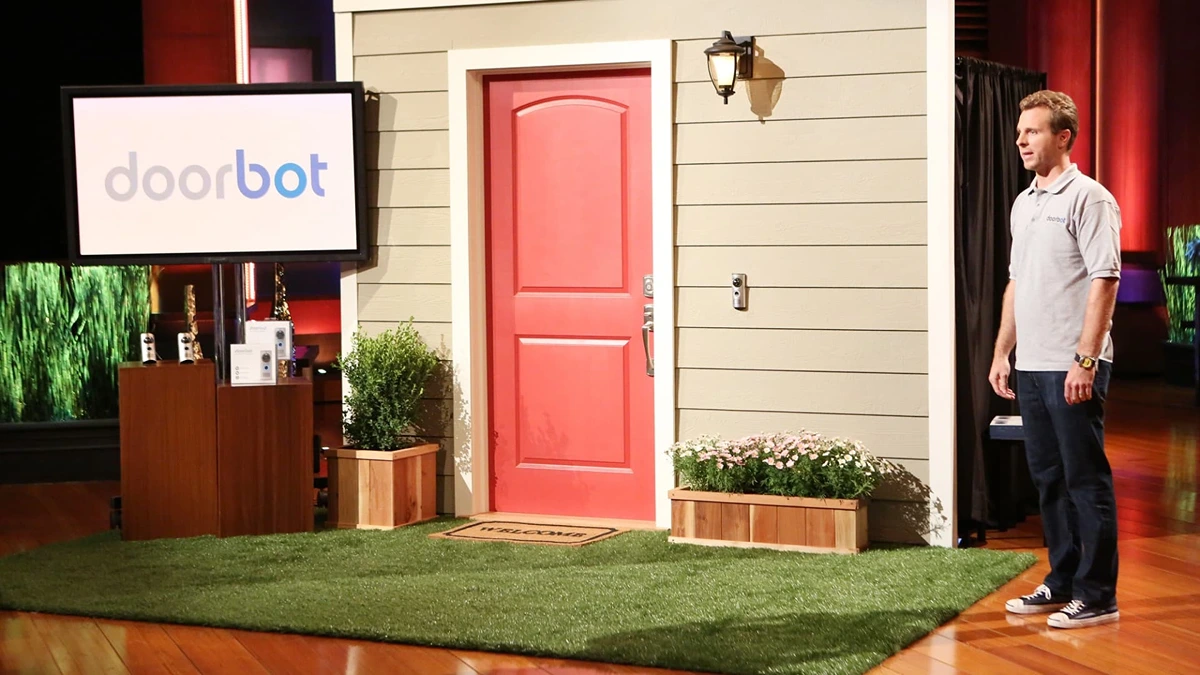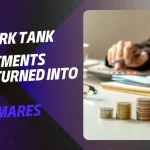
Brands come and go on Shark Tank; some get flyers, while others receive advice. In all these stories, one that stood out was the story of ‘DoorBot (Now known as Ring). It was a video doorbell connected to wifi and smartphones.
However, the product got rejected at that time by the Sharks, and now many people consider it as the biggest miss in the history of Shark Tank.
Let’s have a look at what happened after and beyond the pitch.
The DoorBot Shark Tank Pitch
Back in 2013, Jamie Siminoff stormed the stage of “Shark Tank Season 5 Episode 10,” pitching his product, DoorBot. The product is an automated doorbell connected to your wifi and smartphone, so homeowners can speak to the visitors.
Jamie entered the Tank asking for $700,000, a huge amount, but giving up 10% equity in his brand. The valuation of the company then stood at $7 million. DoorBot was the future of security, not only in homes but for corporations, banks, and so on.
It combined a regular doorbell and added features like internet connectivity with video, letting users get video alerts in real-time. Users can speak to the visitors without opening the door, which enhances security and efficiency, as they can do so even when they are at work.
Despite the vision and a profitable ROI (return on investment), none of the Sharks bid.
The major reason why the Sharks decided to pass was that hybrid hardware & connectivity businesses are riskier and capital-hungry. Though Kevin O’Leary made an offer, with terms like loan instead of capital and on a flat royalty, Siminoff declined.
The Bump That Changed Everything
Though the brand did not get any money, Siminoff gained exposure, and the mere appearance on the Tank increased their traction.
Siminoff, who is an alumnus of Babson College, as stated by the college, the spotlight helped Jamie catalyze his brand without a Shark’s deal. According to a report published by Babson Thought & Action, DoorBot’s demand surged from $100,000 to $175,000, indeed giving him the runway he needed.
In Jamie’s own words, “That was the adrenaline boost we got,” because the early surge was more about validation and less about money. Later, they created a Ring that allowed them to reach the next level.
From DoorBot to Ring: Reinventing the Vision
After the setback Jamie faced on Shark Tank, he decided to pivot by rebranding his brand from DoorBot to Ring. Now, the product wasn’t just about a video doorbell; rather, it evolved into a home security platform.
They offered alarms, cameras, and a one-of-a-kind invention: a cloud storage platform based on a subscription model. After the Shark Tank episode aired, they raised VC-style funding from various investors.
One of the most prominent entrepreneurs and investors who invested in Ring and its mission was Richard Branson. Along with the funding they received, Ring started growing rapidly.
Furthermore, the biggest payoff came in 2018 when Amazon acquired Ring for almost $1 billion. This wasn’t just a good exit. Instead, it was a seismic victory, reflecting Siminoff’s gamble and proving that the Shark Tank rejection was not the end.
Why It’s the Biggest Shark Tank Miss
Here’s what makes Ring’s story a stark example of the Shark Tank miss:
Massive Exit
It was a life-changing moment, and a headline-making story, that it is not necessary to lose your optimism after rejection. Many “no-deal” stories end with multi-billion-dollar acquisitions, just like Ring.
Huge Market Impact
Ring did not just stay a niche brand after evolving into a full-fledged home security company. As a matter of fact, millions of homes now use Ring doorbells and security devices.
Cultural Significance
Ring paved the way for future entrepreneurs to target the smart doorbell category. In today’s era, this has become a part of a wider shift towards connected home security, which is something entrepreneurs still chase.
But It Wasn’t Just Luck: What Jamie Did Right
Ring’s success story was not a fluke; instead, it involved several factors.
- Persistence: Siminoff kept on building his product, refining, and selling it even after facing rejection from America’s top investors.
- Rebranding Strategy: Transforming the name of the product from DoorBot to Ring wasn’t a random move. Rather, it was aligned with Ring’s vision to launch broader security.
- Smart Capital: After the cameras stopped rolling and Jamie faced reality, he started raising money from local angel investors, including Richard Branson. These people believed in his product and its long-term mission.
- Scaling Consciously: Jamie Siminoff made an ecosystem of security devices, and not just a single doorbell. Thus, he diversified and made Ring more profitable.
Lessons for Entrepreneurs and Investors
Let’s look at some of the reasons why Ring is an example for both investors and entrepreneurs.
For Entrepreneurs
- Leverage the opportunity to use social media platforms for your brand’s publicity. This might not lead to an investment, but it will surely give entrepreneurs product validations.
- In the business world, one of the most important things is pivoting at the right time. You might not receive a deal, but reshaping your business attracts more customers and investors.
- Do not put all your eggs in one basket; yes, this phrase works in business as well. Hence, do not rely on any one funding source and keep raising capital as per requirement.
For Investors
- Even seasoned investors like Mark Cuban, Kevin O’Leary, Lori Greiner, and others might misjudge the potential of a technology.
- Though hardware and internet connectivity startups are full of risk, their payoff if structured properly can be wide.
- If an entrepreneur is passionate about solving a real-life problem, backing them can give huge returns on investment in the long run.
Final Takeaway
Jamie’s story reflects that Shark Tank isn’t the final milestone; instead, it is the start of the entrepreneurial journey. Though Jamie left without any deal, he got the limelight, exposure, and advice from the finest investors across America.


















